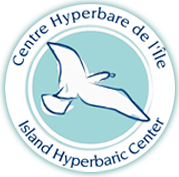The Effects of Hyperbaric Oxygen Therapy in Healthy Aging-
THE EFFECT OF HYPERBARIC OXYGEN THERAPY IN HEALTHY AGING – PROSPECTIVE CONTROLLED STUDY
Amir Hadanny
The Sagol Center for Hyperbaric Medicine and Research, Assaf-Harofeh Medical Center, Israel. Sackler School of Medicine and Sagol School of Neuroscience, Tel-Aviv University, Israel.
The understanding of the aging process and its related functional decline has gained fundamental advances in the last decade. From the thermodynamic perspective, aging can be considered as an energy deficit condition tightly related to tissue ischemia and mitochondria dysfunction.
Hyperbaric oxygen therapy (HBOT) has three major pharmacodynamic effects: First, it can eliminate the relative tissue ischemia induced by atherosclerosis. Second, because mitochondria function is directly influenced by the partial pressure of dissolved oxygen, HBOT can amend mitochondrial dysfunction. Third, HBOT induces proliferation and mobilization of stem cells needed for tissues regeneration. Accordingly, from the pathophysiologic perspective, HBOT has the potential to revert the negative regeneration/ degeneration balance associated with aging.
However, the effects of HBOT have never been evaluated on the healthy aging population. For the first time, a comprehensive study was developed to evaluate the therapeutic effects of HBOT on healthy aging.
A prospective controlled trial was conducted in Assaf Harofeh Medical Center, from 2016 to 2019, on 60 healthy volunteers, 65 years old and higher. The volunteers were divided to 2 groups: the treatment group – was evaluated at baseline, and after 3 months of HBOT daily sessions (60 daily session, 90 min of 100% oxygen at 2 ATA with 5 minutes air breaks every 20 minutes). The control group was evaluated 3 times – at baseline, after 3 months of follow up/control without intervention, and after a crossover of 3 months of HBOT protocol. Comprehensive evaluations included cognitive assessments, high resolution MRI scans of the brain heart abdomen and pelvis, cardiopulmonary exercise test (CPET) , blood samples (including stem cells and immune system cells differentiation), skin and muscle biopsies.
In this lecture, for the first time, the study results will be presented and will include the HBOT effects on:
- Cognitive Functions
- Brain perfusion (MRI)
- Brain microstructure (MRI-DTI)
- Cardiac Perfusion (MRI)
- Cardiopulmonary functional capacity – CPET
- Stem cells
- Mitochondrial function analysis
- Immune system cells differentiation
